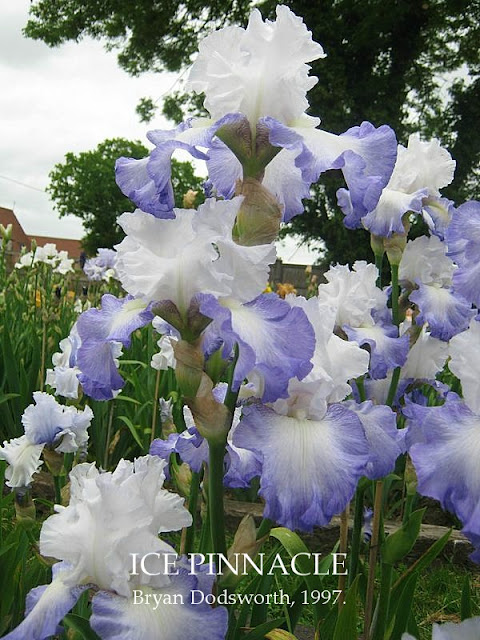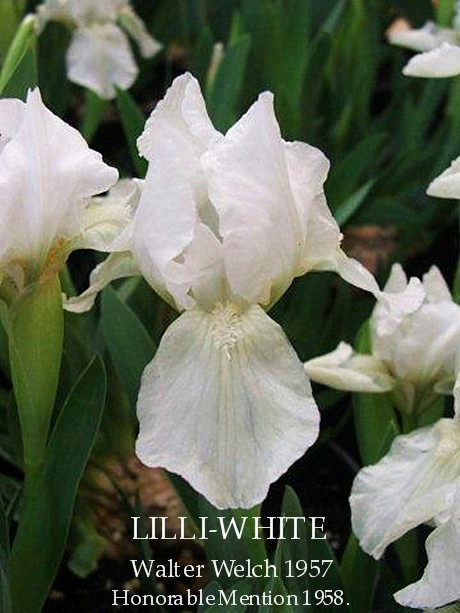'Summit' photo taken yesterday.
Part of my program each season is to replace the older earlier photos on my Blog to portray a more accurate photo for ID which is after all the purpose for the blog, its my record of the Irises growing at home.
The photo is as the Waterson Catalogue description below and shows the rich yellow of the falls.
Waterson Iris Garden, Wanganui, Irises 1960-61.
SUMMIT A lovely iris which, like Pinnacle, is a combination of white and yellow. The standards are the same pure white, without even a hint of cream, but the falls, instead of being primrose yellow as in 'Pinnacle', are a rich yellow. In the clump it is breathtakingly beautiful. There is an exquisite quality of beauty about this combination of white and gold which appeals both to the lover of bright colours for colour's sake and to the lover of artistic colour combinations- Summit is a tall and stately iris with widely branched stems carrying classically formed blooms.
D'Arcy Blackburn, Clifford Street, Gisborne, Bearded Iris Catalogue, 1957-1958
Summit (Stevens) A famous iris, one of the raiser's white and yellow amoenas, which has been acclaimed overseas as an outstanding iris. Tall and widely branched, with standards of pure white and falls of golden yellow, it makes a wonderful clump. Excellence substance and habits of growth. (48 inches)
Reproduction in whole or in part of this post, its opinions or its images without the expressed written permission of Terry Johnson is strictly prohibited. Photo credit and copyright Terry Johnson and Heritage Irises ©.










































